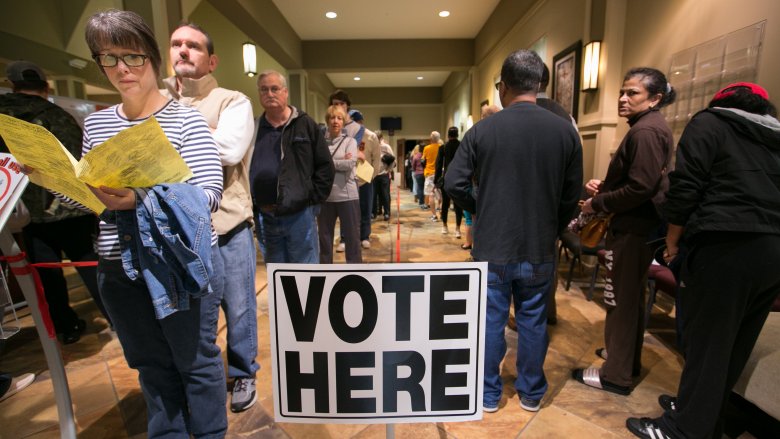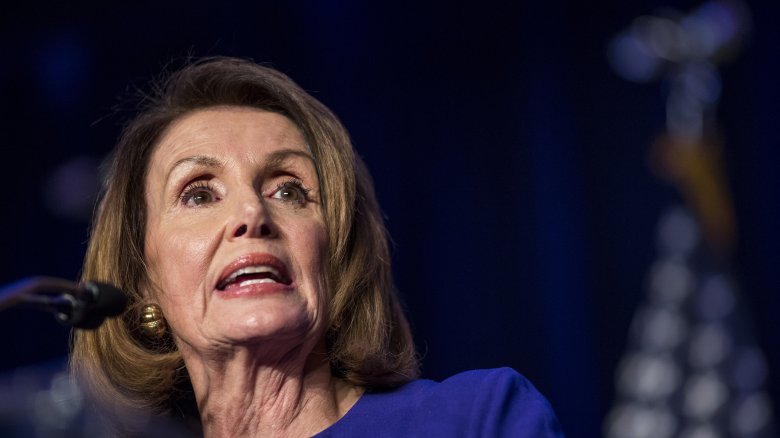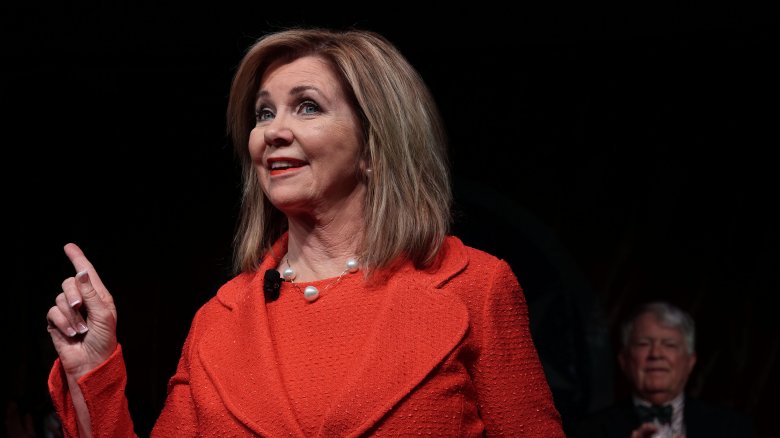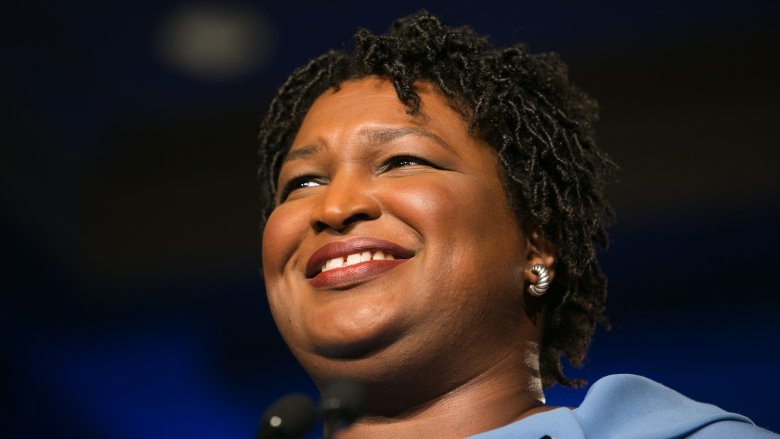What The 2018 Midterms Mean For The Next Two Years
The big news story of 2018 — the one that had Americans either ardently glued to Twitter/TV news or deliberately avoiding it at all costs — was the midterm election in the United States. After the unexpected victory for Republicans in 2016 that left Nate Silver shaken to his core and Donald Trump in the White House, all eyes were on the American electorate for this one. Would this election serve as a referendum on Trump and his policies? Would the Democrats manage to rally their supporters to turn out to the voting booth and flip one or both chambers of Congress? Would Republicans hold fast and retain their control of all branches of government? There was a lot of pressure placed on one single midterm, especially considering midterms are famous for low voter turnout and the overwhelming tendency for incumbents to stay in place.
But now that the results are in (kind of; mostly), what even happened? Who is this good for? Who won? Did anyone win? Well, as it turns out, there's a lot to talk about and not a whole lot of cut-and-dried answers. Here's a look at just what happened and what these results might mean for the USA (and the world) for the next two years.
Wave? What wave?
One of the most commonly used terms with respect to the 2018 election was "blue wave," meaning that a large number of Democrats would come out to the polls as a sort of referendum on the actions of President Donald Trump over the last two years and a large number of seats in Congress and other offices would be flipped from Republican to Democrat. Many right-leaning pundits laughed at this idea and argued that in fact there might be a "red wave" of support from more conservative voters to counteract more energized voters on the left.
So who was right? Blue wave? Red wave? Well, uh. Neither? Both? It's hard to argue there was a single dominating narrative to the events of the election, as there were relatively few surprises for those who followed polling in advance of November 6. While the Democrats did manage to regain control of the House of Representatives, ending the monopoly the GOP had held on all three branches of government, the GOP actually increased their margin in the Senate. Did we see the unambiguous mandate of a nation rebuking Trump that some Democratic voters were praying for? Definitely not. That said, as FiveThirtyEight points out, it's not as simple as looking at the plain numbers of victories and defeats for each party, as many Republican wins in traditional conservative strongholds were by very narrow margins. So while the country wasn't overwhelmed with a liberal tsunami, Democrats did make some real progress.
The vote sure got out
One of the most notable stories from this election that doesn't directly deal with results is that of voter turnout. As Time and others report, 2018 was a historic year for voter participation, especially in a midterm. Estimates put the number of votes cast for House races in 2018 at about 114 million, which easily outstrips the 83 million that turned out for the last midterm race in 2014. While not quite the turnout of recent presidential election years, it was still huge for a year where some states didn't even have a statewide race on the ballot. A key factor in those historic numbers is the record-breaking turnout for early voting, with some 36 million Americans voting before November 6. Key in that number is a swell among young people voting: We saw a 188 percent increase in the youth vote since 2014, the most pronounced surge in any age demographic.
A big reason for this increased voter engagement is that the electorate is paying attention: politics has become inescapable in day-to-day life. Additionally, the increased focus on national issues rather than local ones, such as the sense that any particular vote in this election was a referendum on Trump, may explain turnout numbers closer to a presidential year. All of these elements — increased turnout, high early voting, more young voters, informed electorate — traditionally favor Democrats, but in this case, it was only in urban and suburban areas. Increased voter turnout in some rural areas played well for Republicans, indicating a greater rift between urban and rural Americans than ever before.
Who's in the House?
The one area of the government where the closest approximation of a "blue wave" was apparent was in the House of Representatives. The polls predicted that a number of seats would flip to the Democrats and that the party would regain control of the House for the first time since 2010. This prediction did turn out to hold true, as Democrats picked up a projected gain of around 34 seats previously held by Republicans, bringing the Democrat-Republican balance to about 223 to 201 after the first night of counting, and likely seeing the return of Nancy Pelosi to the position of Speaker of the House.
A Democrat-controlled House will have a number of consequences going forward. For one, President Trump will not be able to pass legislation without the help of Democratic votes, which will mean his agenda will not go unchecked. Additionally, it means Rep. Adam Schiff (D-Calif.) is now the chair of the House Intelligence Committee rather than Rep. Devin Nunes (R-Calif.), which means investigations into the Trump administration will likely return at a faster pace and with greater zeal. That said, without control of the Senate as well, Democrats will not be able to just unilaterally pass legislation; their best bet is serving as a check to Trump, which likely means at least two more years of obstructionism in Congress — that could be good or bad depending on how you feel about Trump's policies and Congress actually passing laws.
Republicans win it in the Senate
Unlike the House of Representatives, the Senate was predicted to remain within Republican control despite national hopes for a "blue wave" in both houses of Congress, due to a strong geographical advantage for Republicans in the way the 35 Senate races (including special elections in Mississippi and Minnesota) broke down in 2018. Of those 35 seats, 26 were held by Democrats or left-leaning independents, and the Democrats found themselves in the position of defending 10 of those seats in states won by Donald Trump in 2016, while the Republicans only had to defend one state won by Hillary Clinton. FiveThirtyEight called this particular Senate map one with a "record-setting bias against Democrats" and "as unfavorable a map as any party has faced in the Senate, ever." As such, even though the Democrats only needed to pick up two seats within the upper chamber to gain a majority, getting those two seats proved to be a herculean task.
As such, very few except maybe the most hopeful were surprised to see the Republicans retain control of the Senate, in fact even flipping three (so far) seats in their favor, placing the balance at about 54-46 (still not final). This Senate, likely still under the leadership of Mitch McConnell, will continue to be able to confirm judges and other nominees, even without the input of the House, meaning that for at least two more years, the Republicans will control the shape of our judicial system, including the Supreme Court.
The new face of American politics
While the color or even existence of any so-called "wave" might be up for debate in the 2018 election, there can be no debate that the results have significantly changed the demographic makeup of the elected officials of the United States, some in historic ways. First, a record number of women have been elected to the House of Representatives, raising the number from 84 to close to 100 (depending how the last few races turn out), with women candidates accounting for two-thirds of the seats Democrats flipped. This collection of women include 33 members elected to the House for the first time, which beats the previous record of female first-year reps set in 1992 — the so-called "Year of the Woman" election — by nine.
Furthermore, there were a number of historic results across various races at various levels. As USA Today reports, these include Jared Polis, newly elected as governor of Colorado, who becomes the first openly gay man elected governor of any state. Internet sensation Alexandria Ocasio-Cortez becomes, at age 29, the youngest woman ever elected to Congress. Ilhan Omar of Minnesota and Rashida Tlaib of Michigan simultaneously become the first Muslim women in Congress. Deb Haaland of New Mexico and Sharice Davids (above) of Kansas were elected the first Native American Congresswomen in history; Davids has the added achievement of being Kansas' first ever LGBTQ member of Congress. These historic firsts show that the U.S. government is making slow strides toward its elected officials more closely resembling the diversity of its electorate.
Rock stars got rocked
One of the things that might have felt most discouraging to Democratic voters among the results is that pretty much all the "rock star" candidates they had going this year lost their races. These were candidates who gained a lot of national attention and celebrity support and who were mainly trying to win tough races in traditionally Republican states.
A few of the highest-profile losses: Beto O'Rourke, who narrowly lost to Ted Cruz in Texas, is probably the name most familiar to Americans thanks to endorsements from Beyonce, LeBron James, and more. Stacey Abrams, who hoped to be the first black woman governor in the U.S. (and still hasn't conceded), did not rocket to victory in Georgia over Brian Kemp, despite high-profile support from Oprah Winfrey and Will Ferrell. Andrew Gillum rose to national attention thanks to his pithy assertion that even other racists thought his opponent, Ron DeSantis, was racist, but he suffered a narrow loss as well. Even for lower-profile candidates, such as Lt. Col. Amy McGrath in Kentucky, who grabbed national headlines for her viral campaign ad back in 2017, and Tennessee Senate candidate Phil Bredesen, who got Taylor Swift to break her personal embargo on political talk to endorse him, Democratic voters across the country saw their hopes dashed.
On the one hand, these high-profile losses seem like huge blows to Democrats, but the fact that these races were as close as they were could indicate a possible shift. This many rising stars taking center stage on the national level may also indicate a preview of what may be to come in 2020. You ... uh ... you are ready for the next election, right?
Not everything is national
As FiveThirtyEight reports, Democrats had some significant gains in gubernatorial races in 2018, but — following the general trend of the election — not quite as big as they could have been. There were a staggering 35 governorships on the line in 2018, and CNN called them the most important races of the election. Why? Because in almost every circumstance, governors have way more effect on the day-to-day lives of their constituents than any given federal senator or representative. State governments are also responsible for the redistricting that happens every ten years after a census (one of which is coming in 2020). With gerrymandering being a major concern recently, the power of redistricting is not an insignificant one.
Democrats won 15 of the 35 races, and Republicans the remaining 20 (well, 20-ish: As of this writing Stacey Abrams, above, is still hoping to force a run-off), leaving the balance at a possible 27 Republican states to 23 Democratic ones, though notably many of those Democratic states are high-population ones like California and New York. Democratic wins in Kansas and Wisconsin should be big news for progressives, as they mean the defeat of Trump-aligned Kris Kobach and vocal anti-unionist Scott Walker. That said, the failure of Andrew Gillum (another rock star candidate) in Florida was a pretty crushing blow for Democrats, especially as polls favored him.
More important than you probably thought
Like governors, state legislatures are among the most important races on the ballot, yet relatively little attention is paid to them in favor of more national races. Nevertheless, the state level is where issues such as taxes, education, and health care get decided, not to mention — again — that pesky redistricting issue. As Vox says, "It is no exaggeration to say that the 2018 state legislative races — and then the even more crucial 2020 elections — will help determine who controls the US House all the way through 2030."
In the 2018 election, Democrats managed to regain some ground they lost during Obama's administration in terms of state houses. They retook both chambers in in New Hampshire, flipped Colorado's Senate, flipped Minnesota's House, and gained trifectas (that is, governor, House, and Senate) in Connecticut and Maine. If Brian Kemp does end up winning in Georgia's gubernatorial race, 37 states will have single-party trifectas — 23 Republican and 14 Democrat. In fact, only Minnesota currently has a legislature with split control of the two chambers. These results could provide interesting comparison and contrast in the next two years.
Also of interest, 22 women won seats in the Nevada Assembly, creating a female majority in that particular state house. You probably don't have to be a political genius to guess that this is the first state legislature to have more women than men in U.S. history. That's pretty cool, no matter what side you're on.
Also really important, even if it sounds boring
If you're a fan of John Oliver's Last Week Tonight, you may have heard his impassioned plea for people to pay attention to their state attorney general elections, despite how boring that particular race may sound. His arguments included the fact that the office of attorney general has become increasingly partisan in recent years and the fact that state AGs will be crucial to investigations into the Trump administration if the president decides to, for example, fire Robert Mueller or try to pardon himself.
So, how did it go? As Bloomberg reports, a majority of state attorney general seats went to Democrats, with victories in Michigan, Wisconsin, Nevada, and Colorado tipping the scales to 27 to 23 in Democrats' favor. This could be big news, as a divided Congress likely means continued gridlock in the federal legislature, leaving more responsibility in the hands of the states. A Democratic majority among state AGs means more states to potentially challenge Trump's policies on a state-by-state basis. Remember how states fought back against Trump's Muslim travel ban, his threat to pull funding from sanctuary cities, and his plans to deport undocumented children? That's led by state attorneys general, so now there may be more of that sort of thing. That said, the increased Republican majority in the Senate means the increased ability of the GOP to stack the federal judiciary with conservative judges, so things could get very interesting.
Showing initiative
One potentially surprising story to come out of the 2018 election is that the American electorate can be pretty progressive when they don't have elected officials as middlemen. That's right: ballot initiatives! As the Nation notes, there were 65 citizen-initiated measures and 82 measures referred by legislatures on the ballot in 37 states. Probably the biggest news was Florida restoring voting rights to former felons, suddenly creating about 1.5 million new voters in the state, a disproportionate number of which were formerly disenfranchised black men. Massachusetts passed a measure to ensure rights for transgender people. Missouri and Arkansas raised minimum wage. Louisiana struck down a law from the Jim Crow era. Missouri and Michigan legalized marijuana. Oregonians voted to keep their sanctuary state law. Three states voted to expand Medicaid. And tons more! How is it that progressive ballot measures can pass with huge numbers while progressive candidates lose or win only by razor-thin margins? It all comes back to gerrymandering again. (Did you vote in your state-level races?)
Not everything was a paradise for progressives, however. North Carolina and Arkansas passed voter ID laws, which disproportionately target black voters. Alabama and West Virginia passed (mainly symbolic) anti-abortion measures. Six different states passed measures related to Marsy's Law, a victims' rights measure that sounds very positive on the surface but which has been criticized by the ACLU and others as undermining due process and detrimental to courts. Washington rejected a measure that would tax carbon emissions. All told, this election really had a little something for everyone.









